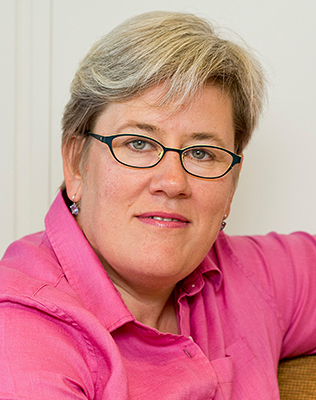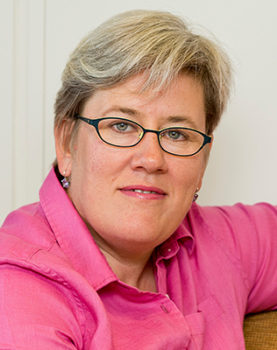The time to invest in energy access is now


By Rachel Kyte, Chief Executive Officer of Sustainable Energy for All (SEforALL), and Special Representative of the UN Secretary-General for Sustainable Energy for All
Delays in closing the energy access gap are holding people back and leading to a failure to exploit the revolution in renewables, which can provide affordable, distributed solutions to complement smart grids. In this post for the Sustainable Finance Leadership Series, Rachel Kyte explains why this is such an expensive mistake and recommends three immediate actions to accelerate universal access.
At the heart of the Sustainable Development Goals (SDGs) is a simply stated goal: that there should be universal access to sustainable energy by 2030. Given the importance of energy for the services that people need and demand – health, education, water supply, food security – it seems remarkable that today just under 1 billion people have no access to electricity and just under 3 billion no access to clean cooking.
A revolution in technology and business models
Happily, this elevation of the importance of energy access within the SDGs comes at a remarkable moment in energy history: the costs of renewable energy, solar photovoltaic and wind in particular, have plummeted and energy storage costs are on the same steep decline. These technologies can be deployed in decentralised approaches, complementing grid-connected energy in cities and towns and placing energy within the reach of those living in rural areas and in remote communities.
This revolution also extends to business models. Countless variations are emerging that capitalise on cell phone technologies, mobile banking and remote censors, bundling energy with other services. These make energy affordable in small amounts and enable those on low incomes to make smart purchases.
Financial flows for energy access: no more than a slow drip
Make no mistake, these decentralised and distributed business models are disruptive: energy is being sold by consumer goods companies, by cell phone companies and by many others beyond the traditional utility. This takes energy services out of the domain, administration and regulation of government. To date, development organisations and development finance have been slow to embrace the possibilities of this revolution.
SEforALL’s Energizing Finance research, published in September 2017, highlights these challenges. It is estimated that annual investment of US$52bn is needed to meet universal electrification. However, Energizing Financefound that international and domestic finance commitments for electricity in the 20 countries with the largest gaps – representing 80% of those without access globally – amount to less than half that figure, averaging just $19.4bn a year. Of this, only a tiny amount of financing commitments – 1%, or $200m a year – are made to the more affordable, decentralised energy solutions. Moreover, the bulk goes to large, populous countries so that for some of those who face the largest energy access gaps, these flows of finance are no more than a slow drip.
SEforALL’s forthcoming update of key trends for 2018 shows progress, but there is still much for everyone to do. Governments need to dedicate more of their own resources to energy access and encourage domestic banks into solutions.
The clean cooking challenge
Clean cooking finance is an even greater challenge than finance for electrification. Across the 20 countries with the largest clean cooking access gaps, representing 84% of those without access globally, the committed annual finance that can be tracked is in the tens of millions of dollars, compared with an estimated annual investment need of at least $4.4bn.
This inability to close the clean cooking investment gap has become a severe development problem – impacting on health, women’s time and natural resources. But it is one with solutions on offer. We need to examine how best to create big markets for affordable clean fuels and much more attention needs to be given to consumer finance, distributor finance, leasing and other mechanisms that have been used to open up markets to those on low incomes in other aspects of basic services. If we include the bundling of clean cooking into safety net payments and invest in innovative cook stove technologies, then this situation could improve rapidly.
Development finance has been slow to embrace the opportunities of clean and affordable distributed solutions. While the private sector will continue to innovate, much of the effort falls within the domain of development finance: market creation, supporting quality assurance, improving regulation and investment climates, sharing risk that will entice supply, training local capital to see potential, and sharing risk to speed up deployment into countries and regions that private capital will not flow to on its own. How development finance can move quicker and bear more risk is a question for multilateral and bilateral institutions in the critical period before 2020 when the world will be taking stock from both a climate action and SDG achievement perspective.
A pivotal role for impact investors
Our work at SEforALL has identified a key role for the small, but growing, cadre of impact investors and philanthropists that have identified energy access as one critical part of meeting climate and development goals. Together with the Wallace Global Fund, IKEA Foundation, GreenFaith and other development organisations, SEforALL is mobilising the faith and philanthropy communities to place their mission-directed investment, grant-making and giving behind the effort to close the energy access gap. This campaign, Shine, is helping bring together new funds that can form a dedicated channel of patient capital so needed by the world’s most vulnerable people.
Three actions to take now
If we are serious about ensuring universal access and overcoming the persistent but erroneous notion that we can build coal-fired power plants to meet everyone’s needs, there are three steps we have to take.
- Government leaders in countries where access is an issue must develop integrated electrification strategies that embrace both centralised and decentralised energy. We need to see more supportive energy and investment policies and regulations that make off-grid enterprises more ‘investable’ for all types of asset classes, including debt, equity and grants, and domestic finance needs to be applied as a priority.
- Countries need to make it easier and less costly for enterprises to qualify for loans from local banks. High collateral and other requirements are simply too onerous for most renewable energy enterprises, especially local ones. This is not a new issue and flexibility in what can be considered as collateral in a loan request could help encourage local currency lending and availability of local currency debt.
- Donors, development finance institutions and impact funds should be especially focused on targeting efforts to support enterprises to deliver services in remote regions – stimulating delivery of electricity access to the ‘last mile’.
It is important to remember that this is not a problem with an extreme price tag. The global estimate is in the tens of billions of dollars, a figure dwarfed by the consumer subsidies for fossil fuels that still exist. The estimated billions of development finance sitting in lines of credit and equity in local banks for SMEs, women-owned businesses, renewable energy businesses, and other niches within the SME sector are not being put to good use. The project pipeline for distributed and off-grid renewables could be much stronger. This is a problem of directing finance to boost a nascent sector and to move it to where it is needed in forms it can be most appropriately used and at the right price.
World leaders put the promise of leaving no one behind at the heart of the Sustainable Development Goals. The innovation, technology and success stories we are seeing across the world help show a pathway to deliver this promise. But we can only achieve it if we fix the financial flows to ensure everyone has access to clean, affordable reliable energy. This is not beyond our means – but it will require a significant increase in discipline, coordination and collaboration.
We have no time to lose.
This commentary is published as part of our Sustainable Finance Leadership Series
The views in this commentary are those of the author and do not necessarily represent those of the Grantham Research Institute

